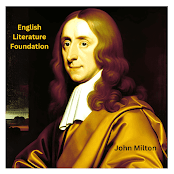The Renaissance: A Cultural and Literary Rebirth of Early Modern England
Introduction
The Renaissance was a period of cultural and intellectual rebirth that took place in Europe from the 14th to the 17th century. In England, this period is commonly referred to as the Early Modern English period, which spans from around 1500 to 1660. This era was marked by significant developments in literature, art, philosophy, and history, making it an exciting and dynamic period to explore.
Literature during the Renaissance
One of the most significant developments during the Renaissance was the emergence of literature as a powerful and influential medium of expression. This period saw the rise of some of the most celebrated writers in English history, such as William Shakespeare, Christopher Marlowe, John Milton, and Edmund Spenser.
Shakespeare's plays
are perhaps the most iconic literary works of the Renaissance era. His plays explored a wide range of themes, including love, tragedy, comedy, and politics. He was a master of characterisation and language, creating unforgettable characters such as Hamlet, Othello, and Romeo and Juliet.
Marlowe
was another prominent playwright of the Renaissance era. His plays, such as Doctor Faustus and Tamburlaine, explored themes of ambition, power, and redemption. His use of blank verse and dramatic structure were also groundbreaking and influential.
Milton
is perhaps best known for his epic poem, Paradise Lost, which explores the fall of man and the struggle between good and evil. His works were notable for their philosophical depth and theological themes.Spenser's
The Faerie Queene was another significant work of the Renaissance era. This epic poem celebrated the virtues of chivalry and explored themes of love, duty, and honour. The poem was written in a complex and ornate style known as Spenserian stanza, which influenced later writers such as John Keats and Lord Byron.
Art during the Renaissance
The Renaissance also saw significant developments in the field of art. The period was marked by a renewed interest in classical art and the human form. Artists such as Leonardo da Vinci, Michelangelo, and Raphael produced some of the most iconic works of the era.
Da Vinci
was a polymath who excelled in many fields, including art, science, and engineering. His most famous works include the Mona Lisa and The Last Supper. His use of chiaroscuro, a technique that emphasises the contrast between light and shadow, was groundbreaking and influential.
Michelangelo
was another towering figure of the Renaissance era. His sculptures, such as David and the Pieta, were celebrated for their realism and emotional intensity. He was also a renowned painter, best known for his frescoes in the Sistine Chapel.
Raphael
was another prominent artist of the era, known for his elegant and graceful style. His most famous works include The School of Athens and The Sistine Madonna. His use of perspective and his ability to capture human emotion were notable features of his work.
Philosophy during the Renaissance
The Renaissance era was also a time of significant philosophical development. Scholars such as Francis Bacon, Thomas Hobbes, and René Descartes made significant contributions to the field.
Bacon
was a philosopher and scientist who is best known for his work in the field of empiricism. He believed that knowledge should be based on observation and experimentation rather than on tradition or authority.
Hobbes
was another philosopher who made significant contributions to the field. His most famous work, Leviathan, argued that a strong central government was necessary to prevent the chaos and violence of a state of nature.
Descartes
was a philosopher and mathematician who is often credited with laying the groundwork for modern philosophy. His most famous work, Meditations on First Philosophy, introduced the idea of radical doubt and the importance of reason.
Drama in the Early Modern English Period
The Early Modern English period was also a time of great development in the field of drama, with the emergence of the Elizabethan theatre scene. The most famous playwright of this time was undoubtedly William Shakespeare, who wrote over 30 plays during his career. Other notable playwrights include Christopher Marlowe and Ben Jonson.
The Elizabethan theatre scene was characterized by its use of the blank verse, a type of poetry that does not rhyme but uses a regular meter. The plays were performed in open-air theatres, such as the Globe Theatre, which could hold up to 3,000 spectators.
The plays of this period were often based on historical events or popular stories, and were meant to entertain a wide range of people. They also reflected the social and political issues of the time, such as the struggle for power and the conflicts between different classes and religions.
Prose in the Early Modern English Period
Prose writing also flourished during the Early Modern English period, particularly in the field of religious writing. One of the most influential works of this period was the King James Bible, which was first published in 1611. This translation of the Bible into English had a profound impact on the language, and many phrases and idioms from the Bible are still in use today.
Other notable works of prose from this period include Thomas More's "Utopia", a political and social satire, and Francis Bacon's essays, which covered a wide range of topics, including politics, religion, and philosophy.
Conclusion
The Early Modern English period was a time of great change and innovation in the English language. It saw the standardization of English spelling and grammar, the emergence of the printing press, and the development of a rich and varied literature.
The literature of this period reflects the social, political, and cultural changes that were taking place, and continues to influence modern English to this day. From Shakespeare's plays to the King James Bible, the works of the Early Modern English period have left an indelible mark on the language and culture of the English-speaking world.

